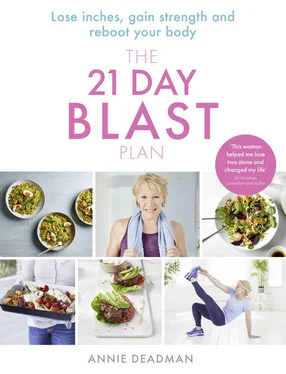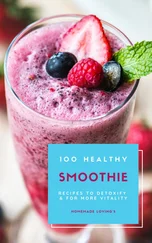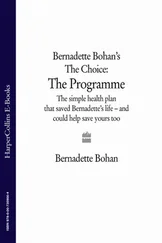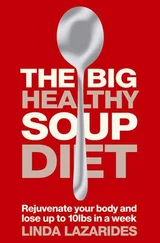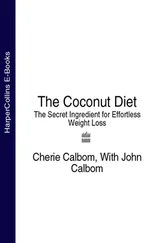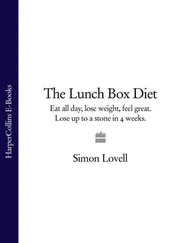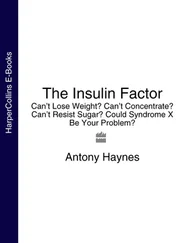One can have an allergy or sensitivity to wheat without being gluten intolerant. The results can be difficult to diagnose due to delayed reaction times and the range and severity of symptoms, but these can be anything from sneezing, wheezing, itching and rashes to digestive issues, sore joints and limbs and nausea. More chronic conditions are migraines, irritable bowel syndrome and arthritis. All of these are often alleviated by the replacement of wheat with other forms of carbohydrate.
Milder forms of wheat intolerance can manifest themselves with bloating, headaches and hay fever-like symptoms. Wheat-based products such as spongy bread and pasta can absorb a lot of water and swell in the body, causing a bloated feeling, which is why many feel so much better (and flatter!) on a wheat-free regime. Yeast can also be a culprit, so if you are a big bread eater, it may be this that is causing your discomfort, too.
You may not know whether you have an intolerance or a full-blown allergy or neither until you omit wheat from your daily diet, but you are likely to feel different over the course of the 21 days without it. A high proportion of the bread and cakes we eat these days is quite highly processed and so opting for more natural forms of carbs (rice, potatoes, sweet potatoes, quinoa) will put less strain on the gut and we will ultimately feel better for that.
It’s worth mentioning that supermarkets today have developed whole sections devoted to gluten-free products and you might be tempted to skip down those aisles and fill up your trolley. Be very wary of these. They tend to be expensive, full of unpronounceable ingredients and loaded with sugar. The label gluten-free does not necessarily mean it is good for you. It just means what it says . . . free of gluten.
ON BLAST: For 21 days you are going to go without wheat-based products. So, that’s biscuits, bread, crackers, cakes and pasta. This includes all bread-related items, which you may deem as totally scrumptious, like tortilla wraps, pittas and focaccia. Anything spongy and squidgy, which may make your gut . . . erm . . . spongy and squidgy. If you are a lover of pasta, then there are many non-wheat varieties on the market – these are mentioned in the Blast rules in Part 2 of the book.
DAIRY
There is untold research available about the effects of cow’s milk products on the human digestive system, and as with wheat products, some of it is inconclusive. You may regard all of this as poppycock, and you may be tempted to put down your IBS, aching joints, migraines, arthritis, sinus and mucus issues, flatulence and skin disorders to other factors. (I’m continuing with the merry cheer . . . have you noticed?)
Fat, as we have seen, is broken down into fatty acids for easy transport in the blood. You can tell different fatty acids apart in many different ways without getting into long, dull explanations. One of those is looking at the length of the ‘chains’ within those fatty acids. Take cow’s and goat’s milk. The fat in cow’s milk contains long-chain fatty acids, which us humans can find difficult to digest. Goat’s milk has shorter chains and therefore some find this easier on the system.
None of it can be proved, but it’s worth trying alternatives. I remember my daughter had terrible eczema as a three year old, and switching to goat’s milk for a year completely got rid of it. Good alternatives to animal dairy are (don’t wince) unsweetened almond milk, rice milk, soya milk, coconut milk and hemp milk. These are worth trying for very little expense and your gut may welcome the change. In the recipe section of the book, these milks are sometimes referred to as non-dairy or dairy-free.
One exception to our Blast cow’s dairy rule is good Greek yoghurt. This is because live cultures are added to the cow’s milk in the yoghurt-making process, which not only renders the product miles more digestible but actually benefits the bacteria *that live in our gut and which we need to nurture.
Why Greek? For no particular reason other than that the high-protein, low-sugar (less than 4g per 100g) varieties are usually labelled as Greek yoghurt. The brand TOTAL would be hailed as queen of the bunch, but it is often quite expensive and there are some other very good, cheaper brands available such as SKYR. Search around but have your ‘label detective’ wits about you. They often contain very poor levels of protein and whopping amounts of sugar.
It’s worth singling out one of the non-dairy options here: soya milk. Soy-based products (soya milk, tofu, etc.) are a great source of protein as they contain the whole package of 20 amino acids as well as valuable omega-3 fats, B vitamins and iron. They also contain phytoestrogens, which act in the same way as the female hormone oestrogen but to a much milder degree. For this reason, much has been written about their ability to alleviate symptoms of the menopause, prevent some cancers and boost libido. It is therefore tempting to knock back the soya milk and anything else containing these phyto things (they are present in a range of foods – tempeh, flaxseeds, oats, barley, lentils, liquorice root, sweet potato).
All of this may indeed be valid, but I wouldn’t be doing my job properly as a health and fitness professional if I didn’t say this. Some cancers (such as breast cancer) have been linked to high levels of oestrogen and therefore medical experts recommend that post-menopausal women with a link to oestrogen-dependent breast cancer should be vigilant about their consumption of soya products and other products that contain phytoestrogens and take good medical advice.
My personal advice would be to do your own research. There is much evidence/research (inconsequential and otherwise) about the risks of over-consumption of soya, not only for the menopausal sector but also for those who are trying for babies or who are pregnant.
If all that has made you fearful, then opt for one of the other choices. I personally dance between coconut milk, unsweetened almond milk and goat’s, with the odd splash of soya.
ON BLAST: For 21 days you are recommended to use other non-dairy milks instead of cow’s milk. You can do as much lip-curling and face-pulling as you like, but give it a go. You’ll be surprised.
CAFFEINE
‘Oh, not the coffee . . . no! Not the cappuccino . . . Please don’t take that away . . .’
Years back, I remember meeting a woman at the beginning of her Blast journey, who confessed to drinking fifteen cups of tea a day. Minimum. And possibly more if her day was going pear-shaped. By the end of the 21 days she had completely lost the 21-fags-a-day look, the dark circles had disappeared and her skin was smooth, almost glowing. She had lost ten years. I was stunned by the difference and oh how I wish I’d taken a photo.
One good fresh coffee (or other highly caffeinated drink) per day does this: it kick-starts the system by temporarily raising your heart rate and blood pressure. It also stimulates the release of the hormone dopamine, which reduces fatigue. In short, you’ll feel upbeat, bouncy, possibly even perky. And that will be enough perk to get you through the day.
The flipside of the caffeine coin is when you consistently drink too much of it. Your blood pressure is permanently increased, your heart is thumping and the body senses a stressful situation. A message is then sent to the adrenal glands to produce the hormone cortisol. Cortisol then helps the body deal with the stress by providing the muscles with large amounts of glucose (it does this by tapping into protein stores via a process called gluconeogenesis in the liver). This glucose is supposed to help the body deal with the ‘fight or flight’ mode (i.e. run like hell or stick it out and do battle). But of course, this is only the physiological response and there is no need for fight or flight.
Читать дальше
